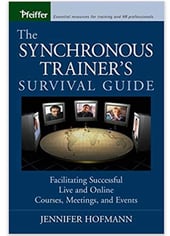1 min read
Cultivating an Analytical Mindset in L&D
One of the key qualities of anyone involved in L&D is having an analytical mindset. It is crucial for the continuous improvement of learning...

When I was just out of college a roommate and I realized somebody was going to have to learn how to cook. As I was the more-frequently unemployed one that fell to me (she was better at cleaning, which is still not part of my skill set). We didn’t have that fancy internet then so I relied on cookbooks, usually from the library and some donated by my dad, often in the form of church-and-women’s clubs fundraising collections of favorite recipes.
Somewhere along the way I picked up the first edition of Marina and John Bear’s wonderful How To Repair Food. Now in its third edition with their daughter Tanya Zeryck, the book told you what to do after things went wrong, and what to do next time. There are wonderful tips for things like desalting soup, rescuing overcooked brussels sprouts, stretching stew, and adding flavor to bland peaches. Also why you should always have a can of evaporated milk on hand, which spices to keep at the ready, and what to do if you have too much of something -- including unexpected guests. Among other things the book taught me that very few mistakes are the end of the world, that nearly every failure can be rescued, and if something is beyond repair you can often improvise something else. (TL;DR: Almost anything can be improved by throwing some cheese on top.) But let me be clear: How to Repair Food is not a cookbook. Rather, it tells you what to do after you’ve started and things are going wrong.
Fast forward a few years to 2003 when, as book reviewer for Training Magazine, I received an advance copy of the first edition of Jennifer Hofmann’s Synchronous Trainers’ Survival Guide (now in its 11th edition), a common-sense compilation of tips Hofmann described as “a diary of things that went wrong and how I fixed them”.  It offered reassurance at a time when virtual training was new to, well, all of us, and helped me become an early adopter of the approach. This ended up serving me very well.
It offered reassurance at a time when virtual training was new to, well, all of us, and helped me become an early adopter of the approach. This ended up serving me very well.
As I reflect upon the "just jump in and train" course of action some have adopted these past years, the two forementioned books have come fresh to mind. The juxtaposition of the two books got me thinking about how so much of what we do involves sometimes excruciating needs assessing and documenting and lesson-planning and facilitator-guiding. And the fact is: You can’t plan for everything. Some days you end up with 1/3 the attendees you were expecting. Or three times what you were expecting. Or there’s the technology-fearful participant who, after elaborate coaching and encouragement to set up his computer, decides to work from home that afternoon using a different computer. Or despite your expertise and a producer in the background the &*%$ slides simply will not load. Or your mic crackles today when it has not crackled before, nor will again. Or just as you are starting a program news comes that the thing you are teaching people has just been changed by HR. (My own favorite: Jennifer’s story of trying to run a class full of participants on dial-up internet the day the whole world was downloading the just-released Ken Starr report about the Clinton presidency.) Or you name it. You’ve probably been there.
Alas, I have no magical technical advice or research-based solutions for you. Here are some suggestions, though:
Many lessons from How To Repair Food can transfer to our work, like know how to spice up bland things, stretch limited resources, and accommodate surprise guests. Perfect though your exquisitely prepared plans may be, sometimes things just go off the rails. Keep breathing, communicate confidence and attitudinal vitality, and help all your guests enjoy the meal – even if you end up sending for takeout.

1 min read
One of the key qualities of anyone involved in L&D is having an analytical mindset. It is crucial for the continuous improvement of learning...

1 min read
Why L&D Needs To Ensure the Virtual Delivery Team is Fully Skilled & Competent The Virtual Facilitator is often seen as the ‘face’ of the virtual...